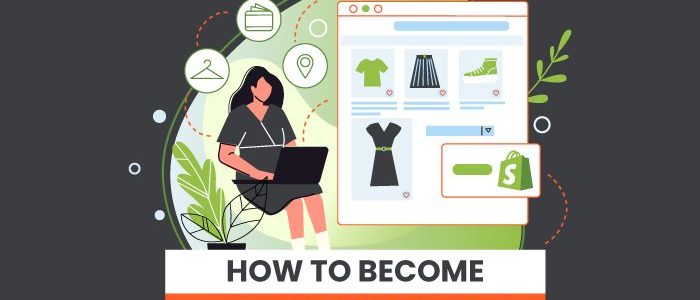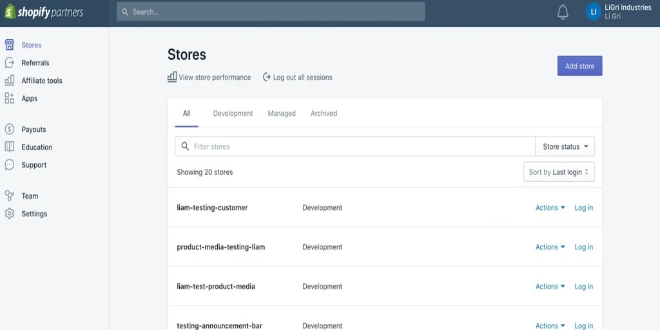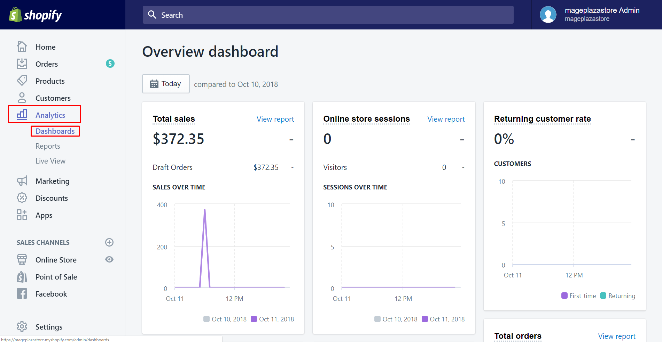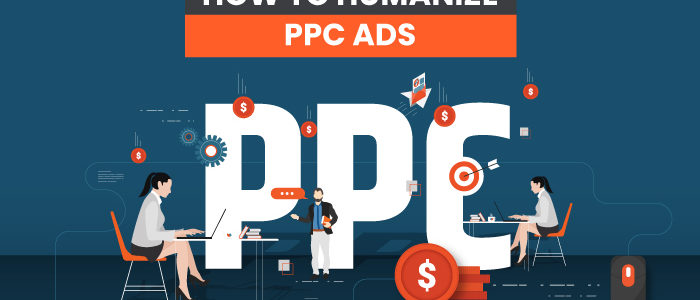
How to Humanize PPC Ads
As marketers and brands, many of you use PPC ads to drive traffic to your brand or a client’s website.
There’s nothing wrong with that approach.
After all, PPC ads have obvious advantages. You can reach new customers, track your results, and manage your budget. However, for all their benefits, these ads can sometimes lack something.
Has anyone guessed what I’m talking about? It’s the human touch.
By humanizing your PPC ads, you can stand apart from your competitors.
Before I go on, what do I mean by humanizing your PPC ads? It means creating ads that provoke a response or an emotion. It can help your ads build connections and trust with your market and ultimately increase your business.
It also takes you away from the nameless, faceless, robotic approach that can be digital marketing at its worst.
Aside from those I’ve already listed, there are a few other essential reasons to humanize your PPC ads and your brand in general. Let’s dive in, and then we’ll discuss different ways you can humanize your PPC ads.
Why Should You Humanize Your PPC Ads?
Humanizing your brand can give you a competitive edge and improve customer retention. It shows you’re taking a customer-centric approach, and you understand your buyers.
However, humanizing your brand also builds customer trust, which is vital these days. Communications company Edelman says, “Trust has never been more important for companies to develop and maintain.”
Further, they found that 75 percent of people actively recommend businesses they trust.
That’s not the only benefit, though; according to Edelman: “Customers who trust you are more likely to engage with, buy from, advocate for, and defend you.”
Now, let’s go into detail about some positives you could gain from humanizing your brand.
Humanizing Your Brand Gives You a Competitive Edge
You might already know one of the advantages of humanizing your digital marketing: the competitive edge.
Why? It’s simple.
In an ever-increasing digital world, consumers are interested in forming connections and engaging with brands.
Creating connections is essential to building long-term relationships, and then it becomes possible to establish customer loyalty.
Humanizing Your Brand Gives a Customer-Centric Approach
When you humanize your brand, you’re providing a personalized touch at every customer journey stage.
This humanized approach takes the focus away from you as a marketer or business owner. Instead, it concentrates on your customer’s wants and considers your prospects:
- individual needs
- goals and ambitions
- challenges and pain points
Further, the customer-centric approach shows you understand your customers’ unique problems and can offer them solutions.
You Benefit From Customer Advocacy and Retainment
Once you’ve sold successfully to a consumer, there are two things you want to do: retain them and turn them into advocates.
By humanizing your marketing, your customers may be more likely to become those advocates and recommend your brand to others.
Then there’s customer retention. You’re more likely to retain your customer by:
- delivering satisfaction
- improving the customer experience
- demonstrating your brand value
10 Ways to Humanize Your PPC Ads
Now you understand the benefits, how do you humanize your PPC ads? Outlined below are 10 easy-to-implement measures you can start using today.
1. Understand Your Audience by Creating Personas
You’ve got a product or service to promote, but who’s your target market, and how do you humanize your PPC ads to suit them?
With buyer personas. Buyer personas are a valuable asset because not every would-be customer responds to your PPC ad in the same way.
To attract your ideal customer, you’ll want to appeal to them by speaking their language, understanding their pain points, and offering them a solution.
That’s where buyer personas come in.
Why are personas so effective? Because they allow the personalized approach. Get this part right, and you can humanize your PPC ads and reach your target market.
2. Create Relevant Ads
Yes, we’re back to personas again. Your buyer personas let you create relevant ads by giving you a clearer idea of your potential customers’ search terms.
You could humanize your PPC ads by better understanding buyer intent and using:
- Google’s “related searches” feature
- a keyword tool
- including specific, relevant keywords and long-tail keywords
Alternatively, work with an agency that can complete the task for you.
3. Use Images
Humanize your PPC ads with images. They don’t need to be staff images. Just include something that represents your business, what it offers, and what it stands for.
Google offers different ways of adding images to PPC ads through Discovery ads or its image extensions option, or you could use Facebook’s carousel ads.
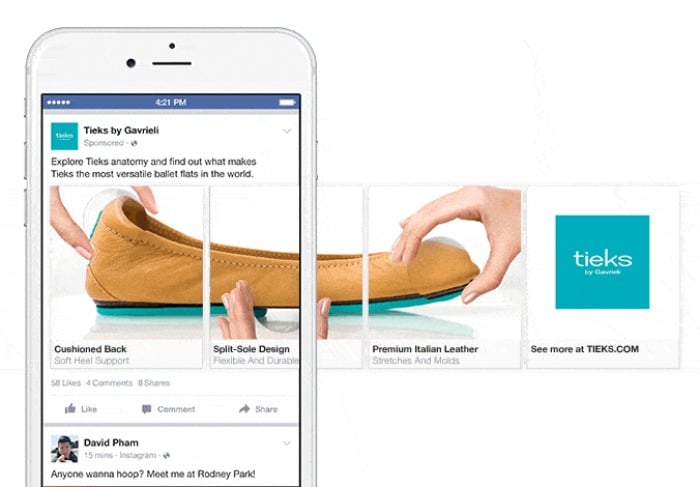
However, plenty of other platforms allow image-rich advertising and storytelling, like Instagram, Pinterest, or YouTube.
4. Use Social Media
Your buyer personas are also good for shaping your social media strategy.
Use your personas to humanize your PPC ads by understanding where your ideal buyers hang out. Then you can target them on their platform of choice.
Sites like TikTok, Facebook, and Instagram allow you to personalize your PPC ads for better results.
5. Keep Testing
Constant testing may mean avoiding getting stuck in your usual advertising patterns. How do you put this into practice?
By varying your PPC campaigns. You can do this through regular A/B testing to see which elements work best for your audience.
For instance, you could test:
- long-form keywords
- colors
- calls to action (CTAs)
Keep testing and optimizing the results as you go until you know you’re getting the right balance.
6. Go Beyond Keywords
Keywords can only do so much. Yes, they can help get your ads in front of the right people, but they lack personalization.
To further humanize your PPC ads, consider four other critical areas of your marketing:
- demographics
- motivation
- challenges
- goals
Simpleview recommends applying these qualities to travel persons to optimize your PPC results. However, these attributes work just as well for just about any other niche.
Take demographics, for instance.
Depending on the age group of the audience you’re targeting, you’re going to want to change your advertisements so they “speak” to that particular group.
Likewise, the motivations, challenges, and goals are likely to be different for each group.
7. Use Storytelling
I’ve already mentioned the value of consumer trust, and there’s an easy way to build on it: with storytelling.
Successful ads often use storytelling at the heart of their ads, and the likes of Instagram Stories have made it accessible.
However, Instagram isn’t the only way. For a similar approach, you could test out Facebook’s carousel ads or maybe a Twitter followers’ campaign.
Here are some ideas if you’re new to storytelling:
- staff profiles or a day-in-the-life article so your audience can get to know you better
- customer success stories
- highlights of a product or service
- reviews or explainer videos
8. Inject Some Personality
Think about it: Are your potential customers more likely to click on an ad that sounds like everyone else’s?
Or will they choose a PPC ad that stands out and speaks for itself?
The first impression many customers get of your business is through online ads, so they must reflect your brand.
Use the same tone for your ads as you would for the rest of your marketing to give your customers greater consistency and familiarity.
9. Don’t Use the Direct Sales Approach
The direct sales approach can be a turn-off for consumers. Instead, you could concentrate on getting the prospect to click through to your website, give you their details, and then gently steer them towards the sale.
You may find that customer mapping is helpful with this approach. When you use customer journey mapping, you can:
- understand the customer’s key touchpoints
- identify your customer’s goals
- nurture your leads by tailoring ads to encourage them to make a purchase
10. Keep It Simple Stupid (KISS)
Finally, keep it simple, stupid (no offense). It’s believed Kelly Johnson first used the phrase in the 1960s when it was originally applied to design concepts. However, it applies just as much to content creation.
There’s a reason why the term is still used today: Sometimes marketers like to complicate things, but there’s no need to.
If you want to humanize your PPC ads more, remember you’ve got a limited amount of time and characters. Make every word count by:
- keeping your language plain and uncomplicated
- spelling out the benefits
- writing with your ideal buyer in mind and using keywords
- finishing with a CTA
Examples of Great Humanized PPC Ads
There’s plenty the big brands can teach us about making greater connections with our perfect consumers. Here are three of the best.
Snickers
Remember the Snickers “You’re not you when you’re hungry” PPC campaign?
The Snickers advert used a series of deliberate spelling mistakes in its online advertising. More than ten years later, the advert is still delivering results.
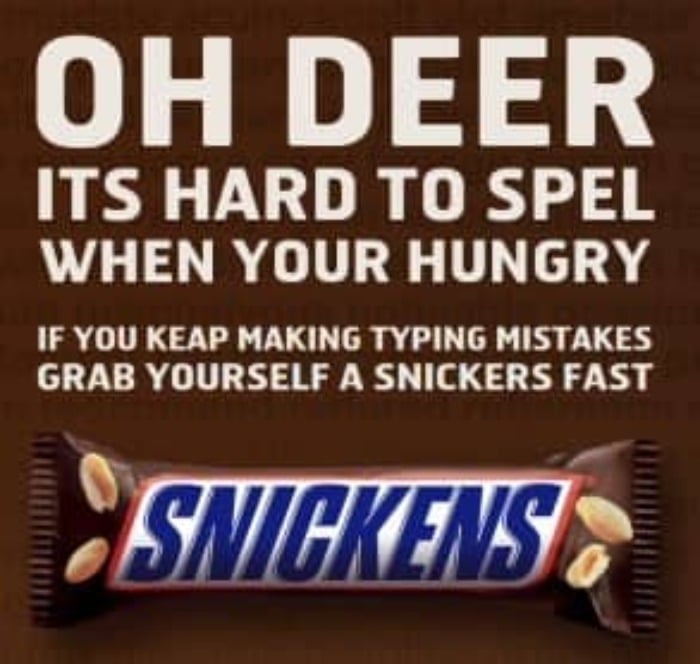
Why did it work so well? Because consumers can relate to it. Everyone recognizes that “hangry” feeling.
The Snickers advert is also novel, shareable, and memorable—all things every advertiser can apply to their marketing.
Converse
Rather than going for the full sale straight off, Converse used “Converse-ations” to reach its younger audience.
Working with the ad agency, Anomoly, Converse included keywords teenagers might use when searching online, like “spelling bee” or “how to talk to girls.”
Converse’s campaign allowed it to launch a dialogue with shoppers and used ad copy and microsites to engage consumers, rather than going with the traditional advertising approach.
The “Domaination” campaign proved effective because it provided helpful, relevant content to potential buyers and built connections with them.
Alec Brownstein
Search for “best PPC adverts” online, and the name “Alec Brownstein” is commonly featured in the top five.
Who is he? He was a job hunter who hit upon the idea of bidding on the names of five creative directors.
Brownstein’s ad looked like this:
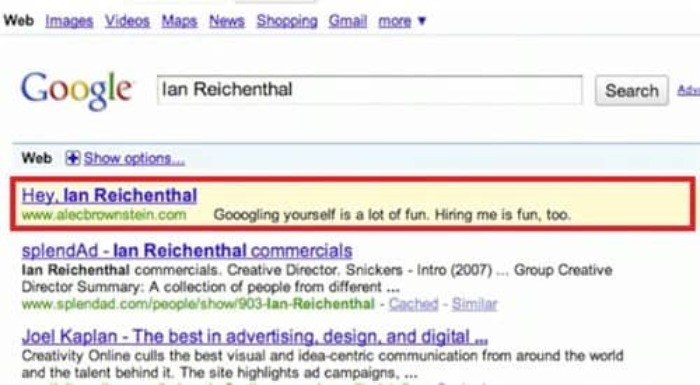
When the creative directors googled their names, they found Brownstein’s advert and his website too. As a result, Brownstein was offered the dream job by one of the creative directors he’d targeted.
Brownstein’s advert was successful because he used initiative by thinking in the same way he thought the creative directors would. Many of us Google our names, and Brownstein figured the creative directors would do the same.
There’s a lesson here for every advertiser: Think like your ideal audience and create innovative new ways to reach them.
Conclusion
With the surge towards digital, your marketing may sometimes lack the personal touch. However, consumers want to know who they’re buying from, and they want to build relationships with brands to enhance trust.
Further, when you humanize your PPC ads and other forms of your digital marketing, you open up a line of communication that invites consumers to find out more about your brand.
Snickers and Converse are two brands that have done this well, and you can learn from and apply them to your marketing.
Creating ads that evoke emotion and build relationships is straightforward. Just follow the tips in this article, and you’ll be on your way to humanizing your advertising and building lasting relationships with satisfied customers.
If you’re ready to kick off a humanized PPC ad campaign and want help with strategy, reach out to our team of experts.
Do you humanize your PPC ads and digital marketing? What approach do you take?

